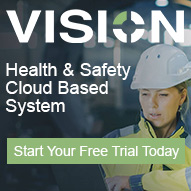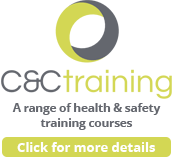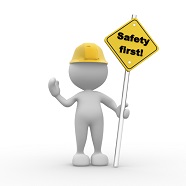Employers are required to evaluate risks to safety and health and take action to improve the level of protection given to workers. This process, the ‘Risk Assessment’ involves identifying hazards and assessing the associated risks.
Identify personal safety risks
Risk management should begin by addressing concerns from within an organisation. Risks can be established through:
- Focus groups to discuss and explore potential risks
- Surveys and questionnaires, either paper based or online to gather information from large groups
- Observing staff in their working environment
- Analysing incident reports
- Formal auditing
The types of risks that may be identified include: Physical attack, verbal abuse, kidnap, and accidents
Lone Working Policy
Lone worker Policy A lone worker policy is a written document outlining an organisation’s culture and commitment towards the personal safety of their employees. It is something that staff should understand, providing clarity and a framework to tackling lone worker issues within the organisation. What should be included? –
- The definition of ‘lone worker’
- The purpose of the lone worker policy
- The organisation’s approach to staff safety
- Commitments of the employer
- Manager’s responsibilities
- Employee’s responsibilities
- How and when to report an incident and what further action will be taken
- What help and support is available
- When the policy will be reviewed
Formal Risk Assessment
A risk assessment is an important step in protecting your workers and your business, as well as complying with the law. It helps you focus on the risks that really matter in your organisation.
Risk assessment should only be performed by individuals with the required experience, qualifications and knowledge. It is advisable that an assessment is conducted by more than one person, for example jointly by a line manager and a health and safety advisor.
What are the steps?
- Assess all activities undertaken by staff by breaking them down into people, environment and task (P.E.T) – Who are the PEOPLE involved, what ENVIRONMENT are they working in and what does the TASK involve?
- Clarify the level of risk by comparing severity vs. likelihood to provide a rating from which an action plan can be created to manage and reduce risk.
- State how risk is intended to be managed. What actions should be taken?
- Stop the task?
- Double up on staff?
- Provide training?
- Change working procedures?
- Providing personal safety alarms?
Risk assessments should be reviewed at least on an annual basis or when:
- A task changes significantly
- The staff undertaking the task change
- A new task is added
- A significant incident has occurred
Dynamic Risk Assessment
Best practice has shown that a provision for dynamic risk assessments is a key element to manage safety within a business. Dynamic risk assessments are made by workers as a situation develops, and do not necessarily follow the template of a formal assessment. Rigid rules for risk management make it difficult for workers to act upon common sense, and in many cases can have a detrimental effect on safety by pressurising workers to act in way that may be counter intuitive to what is actually happening in a situation.
By equipping staff with the skills to make dynamic decisions, safety can be improved and a culture for safe situation based decision making can be developed.
By undertaking regular situational judgement assessments that map employee competence, confidence, engagement and behaviour companies find out what their staff truly know, how they work and the decisions they are likely to make on the job. This knowledge could be the key to preventing errors and misunderstanding that could lead to incidences and injuries.
In order to make a dynamic risk assessment you need to ask:
- Is your decision objective and not based on emotion?
- Is your decision logical?
- Is your decision justifiable?
If you answer these three questions with sound commons sense, then you can be confident that your dynamic risk assessment will be clear and effective.
It is vital that staff who have to carry out dynamic risk assessment are trained in good personal safety techniques and are provided with the necessary skills and tools to make a safe retreat.
The use of dynamic risk assessments will help staff to respond appropriately to a developing situation and minimise the risks to their personal safety.
Lone worker training and information
Education is vital for the protection of staff within the workplace to understand and mitigate risks that can occur. Training should focus on the avoidance of conflict and provide best practice for non-violent resolution.
Training topics should cover:
- Awareness of lone worker safety
- Importance of policies and procedures set out for personal safety
- Planning and preparation to reduce risk
- Practical risk avoidance strategies
- Communication skills including diffusion and de-escalation techniques
- Good practice
- Use of personal protective equipment e.g. safety devices
- On-going communications
In order to successfully implement a lone worker policy and create a safe working culture, management need to lead by example. This includes attending training sessions with staff and broadening their knowledge on personal safety and what systems are available in the market. It should also be noted that lone worker policies and systems will only work if people adhere to procedure and use the information provided. When policy and procedure are not followed, incidents are most likely to occur.
C&C Consulting Services Ltd, are able to provide advice and guidance to employers when they are developing a robust lone working policy, completing formal or dynamic risk assessments associated with lone working activities. Our sister company, C&C Training Ltd can provide the provision a bespoke lone working training programs to fit your business need.











